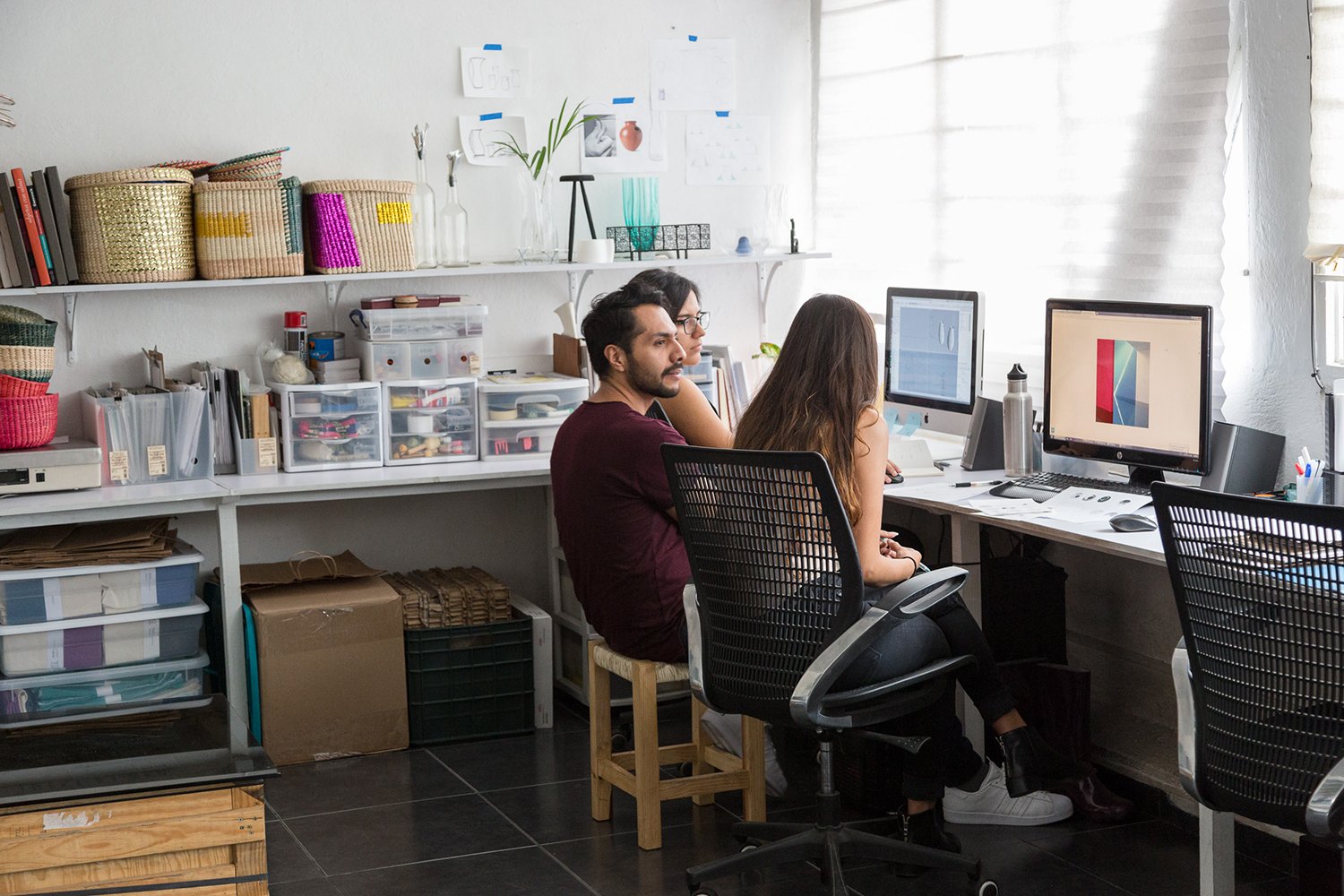PROCESS | PROJECTS | EXHIBITIONS | LECTURES | PRESS
Collectible Objects — Architectural Digest
In an editorial piece by Rebeca Vaisman, Joel Escalona is added among other talented Latin American creators. It explains that Joel Escalona's work values traditional craftsmanship with a practical approach: carpentry, ironwork, and manual labor are the pillars of his work, seeking beauty and delight as solutions for daily needs.
Interview by Rosanna Robertson: Purity of Concept and Artistic Integrity in the work of Joel Escalona
Mexico City boasts a vast array of materials and methods of production, and Joel Escalona has the critical eye and singular vision of the artist – and the combination of the two results in objects of great beauty and character which sit comfortably on both sides of the form-function divide. In fact, Escalona notes that often, for him, “the function is just an excuse to make an artwork – the chance to make an idea into something.”
Balance review by designaholic.mx
En este episodio, JD y Alex analizan ‘Balance’ por Joel Escalona diseñado en 2018. A través de materiales y procesos con distintos pesos estéticos se crearon 10 piezas que desafían las leyes del equilibrio partiendo de un mismo concepto.
Monocle Magazine, Profile: Breuer Estudio, Creative Director Joel Escalona
Mexico City furniture company Breuer was founded in 1993 by Arturo Verástegui and has since become one of the country's top manufacturers specialising in carpentry. The brand regularly collaborates with designers and architects on collections presented at the Mexican capital's biannual art fair, Zonamaco, but is only just starting to make a name for itself internationally.
designaholic.mx
In this episode, JD talks with Joel Escalona about his beginnings and how from an early age he was already making noise on the most important stages of the design world. Joel also shared how his vision of design has changed over the years.
Architectural Digest AD100: Joel Escalona
In a short time, Joel became a sensei for future generations, through a prolific career in industrial design. His journey has led him to creative collaborations of all kinds, with one constant: "Design is a manifesto in itself, so it must always have a strong voice that is technologically challenging, symbolically challenging and, of course, functionally effective." Escalona shared.
L'Officiel Magazine: HONOR THE TRADITION
"We are interested in talking about talent, creativity, and, above all, the self-management of social artisanal enterprises. The objective is to help market the work of all the workshops under fair trade conditions. My role as the new creative director is to shape the project on three levels: internal creative structure, design of new products, and development of communications to reach a broad audience,"
Architectural Digest: Essential lines
"With this collection, we celebrate the happiness of the sculpturally beautiful, the luxury of appreciating nuances in everyday sensations, the freedom to create with clear emotions, and the lyricism of slow, opulent, and imperfect forms," concluded Joel Escalona.
1stDibs: Joel Escalona
At 32, ESCALONA is already one of Mexico’s top designers. He’s constantly in motion, working across disciplines, which perhaps explains why so many of his projects address the physics of movement.
Over a short span in April, for instance, he traveled to Salone Internazionale di Milano, where he exhibited with ROCHE BOBOIS and Opinion Ciatti. Back home in Mexico City, he met with his university students in industrial design programs at Centro and the Monterrey Institute of Technology and Higher Education. In between, he visited the dusty tallers — the carpentry, ceramic, glass, stone and metal workshops that dot Mexico City’s back alleys — where so many of his projects evolve from imagination to reality.
Architectural Digest: Pragmatic, ironic, and poetic, this is the sculptural collection conceived by Joel Escalona
Laws of Motion is the first show of collectible design created by Joel for Breuer; pieces that, when looked at, immediately captivate the viewer and envelop them in the stories they guard and that challenge the laws of movement.
INTERNI Magazine: Stability and Movement
Joel, unlike many, presented himself as an ally of companies and saw an opportunity there. With a firm step and without hesitation, he knocked on the doors of companies presenting his projects. And so, he managed to work with Roche Bobois, Compass, TANE, Urrea, and Libbey. He acknowledges having learned a lot, especially from the last two, as he had the opportunity to get involved with multidisciplinary teams. His style is clean, he loves sinuosity and contrast with straight lines. In the latest edition of Zona MACO, he presented his first personal collection and sold most of the work to the public during the same fair. "I decided to work on my own since I realized that there was no industrial design studio that really worked with the industry developing products in Mexico."
Editorial Board of Architectural Digest Mexico
Under the premise of challenging the limits of contemporary design, at a young age, Joel has created iconic pieces that stand out in the international scene.
From everyday objects to extravagant furniture, in each project, he showcases his infinite creativity and a complete understanding of form.
Montblanc Magazine: Joel Escalona - Design inspired by People
For Joel Escalona, the world is a place of unlimited inspiration. A tad. a pan: You will find everyday products like these in the portfolio of the Mexican designer. Why? Because it's people that inspire him - and given there are over seven billion in the world, that makes tor quite a number of inspiring subjects, and an even higher number or possible ideas. How can ideas help people? This is one of desian's most fundamental questions.
L'Officiel Interview: Challenging Balance
Questioning why something should be a certain way or meet expectations - which have been formed through stereotypes - is always challenging. Observation is fundamental for any designer. Designing an object with a function is also essential. Shouldn't all objects meet an aesthetic purpose and artistic value? This should be a basic principle.















